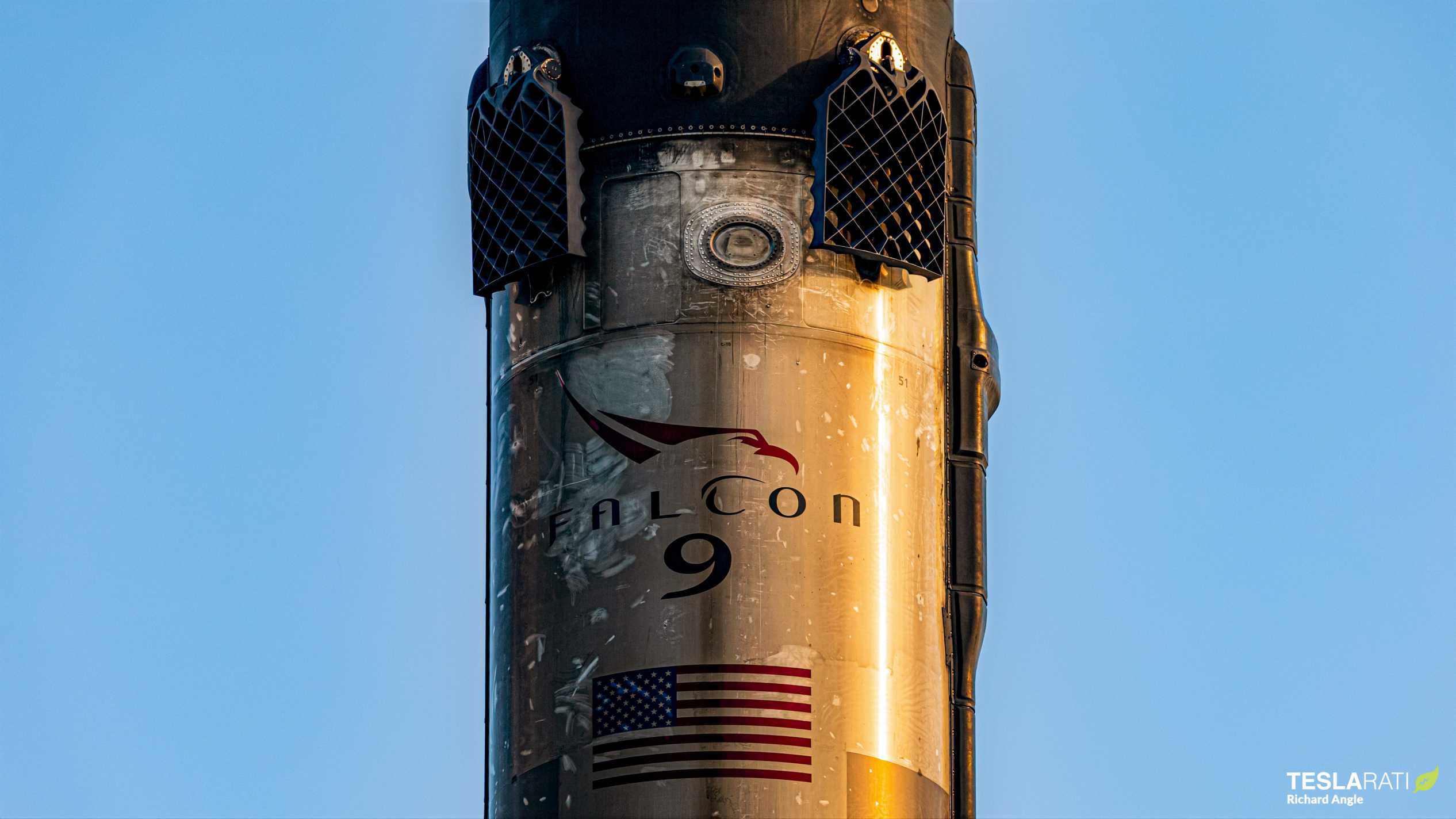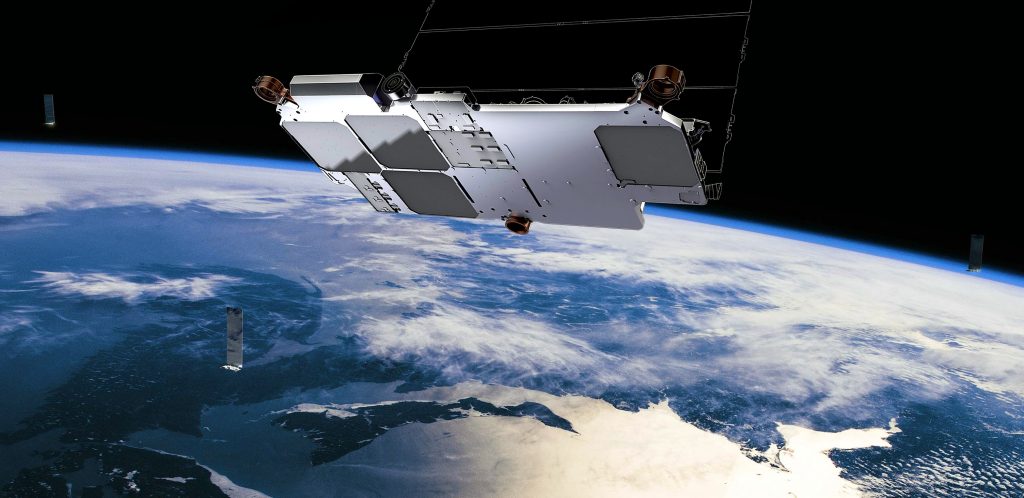

News
SpaceX’s first Starlink launch of 2021 slips to Tuesday [update]
Update: SpaceX says it has delayed Falcon 9’s Starlink-16 launch to no earlier than (NET) 8:23 am (13:23 UTC), Tuesday, January 19th to allow time for weather to improve at the rocket’s Atlantic Ocean recovery zones.
If the schedule holds, Falcon 9 booster B1051 is now on track to attempt its eighth launch and landing 37 days after flight number seven – still potentially breaking the current world record for rocket turnaround by two weeks.
A SpaceX Falcon 9 rocket and local weather conditions appears to be on track for the company’s first Starlink launch of 2021 and 17th Starlink mission overall.
Set to be SpaceX’s 16th launch of operational Starlink v1.0 satellites, the mission – known as Starlink-16 (V1 L16) – is scheduled to lift off no earlier than (NET) 8:45 am EST (13:45 UTC) on Monday, January 18th.
Launching out of SpaceX’s Kennedy Space Center (KSC) LC-39A facilities, Starlink-16 is expected to carry a default batch of 60 low Earth orbit (LEO) internet satellites. Delivered to a relatively low (i.e. fast-decaying) transfer orbit, the 60 satellites will gradually spread out after deployment, opening their solar arrays and beginning a one or several-day period of health checks.

Once declared healthy by SpaceX ground controllers, each flat, rectangular satellite will power up a krypton-fueled Hall-effect thruster and begin the several-week process of raising and circularizing their orbit. In reality, it can take several months for each Starlink batch to separate into smaller groups and reach their respective planes – referring to a sort of linear band of satellite coverage wrapping around Earth’s circumference. For the portions of the Starlink constellation SpaceX is currently focused on building out, each of those planes requires 22 satellites – two of which are believed to be spares.
As previously discussed on Teslarati, the Falcon 9 booster SpaceX has assigned to Starlink-16 is scheduled to fly just 36 days after its last mission, smashing the previous world record for reusable rocket turnaround by ~30%. Starlink-16 will also be Falcon 9 B1051’s eight launch, marking another first for the Falcon rocket family.
According to SpaceX, both of Starlink-16’s payload fairing (the conical carbon fiber composite structure that protects satellites from the elements and atmospheric stress) halves will be flight proven – one on its second flight and the other flying for a third time. Waiting until the last second to avoid high seas in the recovery region, twin fairing recovery ships GO Ms Tree and GO Ms Chief departed a North Carolina port en route to Starlink-16’s fairing catch zone on January 17th. It remains to be seen if Starlink-16 will mark a return to simultaneous catch attempts, which haven’t been seen in several months.

Elon Musk
Tesla’s Elon Musk: 10 billion miles needed for safe Unsupervised FSD
As per the CEO, roughly 10 billion miles of training data are required due to reality’s “super long tail of complexity.”

Tesla CEO Elon Musk has provided an updated estimate for the training data needed to achieve truly safe unsupervised Full Self-Driving (FSD).
As per the CEO, roughly 10 billion miles of training data are required due to reality’s “super long tail of complexity.”
10 billion miles of training data
Musk comment came as a reply to Apple and Rivian alum Paul Beisel, who posted an analysis on X about the gap between tech demonstrations and real-world products. In his post, Beisel highlighted Tesla’s data-driven lead in autonomy, and he also argued that it would not be easy for rivals to become a legitimate competitor to FSD quickly.
“The notion that someone can ‘catch up’ to this problem primarily through simulation and limited on-road exposure strikes me as deeply naive. This is not a demo problem. It is a scale, data, and iteration problem— and Tesla is already far, far down that road while others are just getting started,” Beisel wrote.
Musk responded to Beisel’s post, stating that “Roughly 10 billion miles of training data is needed to achieve safe unsupervised self-driving. Reality has a super long tail of complexity.” This is quite interesting considering that in his Master Plan Part Deux, Elon Musk estimated that worldwide regulatory approval for autonomous driving would require around 6 billion miles.
FSD’s total training miles
As 2025 came to a close, Tesla community members observed that FSD was already nearing 7 billion miles driven, with over 2.5 billion miles being from inner city roads. The 7-billion-mile mark was passed just a few days later. This suggests that Tesla is likely the company today with the most training data for its autonomous driving program.
The difficulties of achieving autonomy were referenced by Elon Musk recently, when he commented on Nvidia’s Alpamayo program. As per Musk, “they will find that it’s easy to get to 99% and then super hard to solve the long tail of the distribution.” These sentiments were echoed by Tesla VP for AI software Ashok Elluswamy, who also noted on X that “the long tail is sooo long, that most people can’t grasp it.”
News
Tesla earns top honors at MotorTrend’s SDV Innovator Awards
MotorTrend’s SDV Awards were presented during CES 2026 in Las Vegas.

Tesla emerged as one of the most recognized automakers at MotorTrend’s 2026 Software-Defined Vehicle (SDV) Innovator Awards.
As could be seen in a press release from the publication, two key Tesla employees were honored for their work on AI, autonomy, and vehicle software. MotorTrend’s SDV Awards were presented during CES 2026 in Las Vegas.
Tesla leaders and engineers recognized
The fourth annual SDV Innovator Awards celebrate pioneers and experts who are pushing the automotive industry deeper into software-driven development. Among the most notable honorees for this year was Ashok Elluswamy, Tesla’s Vice President of AI Software, who received a Pioneer Award for his role in advancing artificial intelligence and autonomy across the company’s vehicle lineup.
Tesla also secured recognition in the Expert category, with Lawson Fulton, a staff Autopilot machine learning engineer, honored for his contributions to Tesla’s driver-assistance and autonomous systems.
Tesla’s software-first strategy
While automakers like General Motors, Ford, and Rivian also received recognition, Tesla’s multiple awards stood out given the company’s outsized role in popularizing software-defined vehicles over the past decade. From frequent OTA updates to its data-driven approach to autonomy, Tesla has consistently treated vehicles as evolving software platforms rather than static products.
This has made Tesla’s vehicles very unique in their respective sectors, as they are arguably the only cars that objectively get better over time. This is especially true for vehicles that are loaded with the company’s Full Self-Driving system, which are getting progressively more intelligent and autonomous over time. The majority of Tesla’s updates to its vehicles are free as well, which is very much appreciated by customers worldwide.
Elon Musk
Judge clears path for Elon Musk’s OpenAI lawsuit to go before a jury
The decision maintains Musk’s claims that OpenAI’s shift toward a for-profit structure violated early assurances made to him as a co-founder.

A U.S. judge has ruled that Elon Musk’s lawsuit accusing OpenAI of abandoning its founding nonprofit mission can proceed to a jury trial.
The decision maintains Musk’s claims that OpenAI’s shift toward a for-profit structure violated early assurances made to him as a co-founder. These claims are directly opposed by OpenAI.
Judge says disputed facts warrant a trial
At a hearing in Oakland, U.S. District Judge Yvonne Gonzalez Rogers stated that there was “plenty of evidence” suggesting that OpenAI leaders had promised that the organization’s original nonprofit structure would be maintained. She ruled that those disputed facts should be evaluated by a jury at a trial in March rather than decided by the court at this stage, as noted in a Reuters report.
Musk helped co-found OpenAI in 2015 but left the organization in 2018. In his lawsuit, he argued that he contributed roughly $38 million, or about 60% of OpenAI’s early funding, based on assurances that the company would remain a nonprofit dedicated to the public benefit. He is seeking unspecified monetary damages tied to what he describes as “ill-gotten gains.”
OpenAI, however, has repeatedly rejected Musk’s allegations. The company has stated that Musk’s claims were baseless and part of a pattern of harassment.
Rivalries and Microsoft ties
The case unfolds against the backdrop of intensifying competition in generative artificial intelligence. Musk now runs xAI, whose Grok chatbot competes directly with OpenAI’s flagship ChatGPT. OpenAI has argued that Musk is a frustrated commercial rival who is simply attempting to slow down a market leader.
The lawsuit also names Microsoft as a defendant, citing its multibillion-dollar partnerships with OpenAI. Microsoft has urged the court to dismiss the claims against it, arguing there is no evidence it aided or abetted any alleged misconduct. Lawyers for OpenAI have also pushed for the case to be thrown out, claiming that Musk failed to show sufficient factual basis for claims such as fraud and breach of contract.
Judge Gonzalez Rogers, however, declined to end the case at this stage, noting that a jury would also need to consider whether Musk filed the lawsuit within the applicable statute of limitations. Still, the dispute between Elon Musk and OpenAI is now headed for a high-profile jury trial in the coming months.








